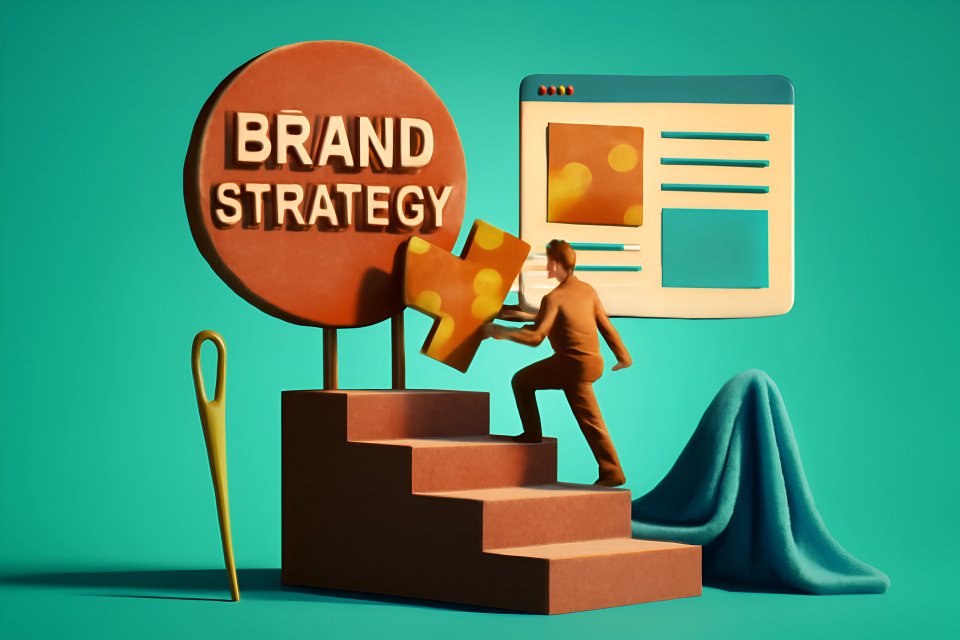Let’s be honest. You’ve felt that sinking feeling in your gut, haven’t you? You spend a small fortune on a website redesign, wait months for the big reveal, and when it finally launches… nothing changes. It’s just a fresh coat of paint on the same old problems, a pretty face with no soul, and it does absolutely nothing to boost your bottom line.
Why does this happen? It’s because you skipped the single most critical ingredient: brand strategy. This guide will show you how to move beyond mere aesthetics to build a powerful, cohesive digital experience that seizes your audience’s attention and drives unstoppable business growth.
By the time you finish reading, you will possess a clear, actionable framework to guarantee your new website is a true weapon for your brand—a strategic asset that works tirelessly for you.
Before a Single Pixel is Pushed: The Case for a Strategy-Led Redesign
Think of your website as the digital headquarters of your brand. It’s the first handshake, the main sales floor, and your primary communication hub, all rolled into one. Without a strategic blueprint, the entire design and development process is a ship without a rudder, drifting aimlessly in a sea of pretty but pointless design choices.
A strategy-first approach forces clarity and provides an unwavering North Star for every decision. When your brand strategy dictates the design, the copy, and the user experience, you create a seamless journey that builds unshakable trust. In fact, research shows it takes a mere 50 milliseconds for users to form an opinion about your website, and that first impression must scream consistency and purpose.
Ultimately, this is about survival and dominance in your market. A strategically-aligned website converts better because it speaks directly to the deepest needs and desires of your ideal customer, leading to a dramatically higher return on investment. At CaptivateClick, we never begin a web design project without a deep dive into brand strategy. It's the difference between building a pretty website and building a better brand.
The 5-Step Framework for a Seamless Brand and Web Integration
Step 1: The Discovery & Strategy Phase (The "Who" and "Why")
This is where the war is won—long before the first design is drafted. This is the soul-searching phase where you must answer the most fundamental questions about your existence. You must define your core brand identity with ruthless honesty.
Start with your mission, vision, and values. Who are you, and what do you truly stand for? Then, dig deep into your target audience personas, going far beyond simple demographics to understand their secret fears, their urgent problems, and their ultimate goals. According to HubSpot, a deep understanding of your audience is paramount, as it forms the bedrock of a website that truly connects and persuades.
Finally, you must define crystal-clear, measurable goals for the redesign. Vague objectives like "improve the website" are useless. Instead, set concrete targets like "Increase qualified leads by 30%" or "Decrease mobile bounce rate by 20%," which directly ties your website's performance to tangible business outcomes.
Step 2: The Visual Translation Phase (The "Look" and "Feel")
Now, you will translate your brand’s soul into a visual language that commands attention. This is where you take abstract attributes like "innovative," "reliable," or "luxurious" and forge them into a tangible look and feel. This process begins not in Photoshop, but with mood boards that capture the precise emotion you want to evoke.
From there, you must codify your visual identity. Does your logo need a refresh to match your evolved strategy? You must choose a color palette that triggers the right psychological responses and select typography that reinforces your brand’s unique voice. As detailed in guides from Smashing Magazine on visual identity, every visual element must work in concert to tell a single, powerful story.
The final, crucial action in this phase is creating your official brand guidelines. This document is the absolute law for your brand's visual presentation, ensuring unwavering consistency long after the redesign is complete. This is non-negotiable if you want to build a memorable brand, and it's why we focus on developing the strategic visual guidelines that give your brand its power.
Step 3: The Structural Blueprint Phase (The "How" and "Where")
With your strategy defined and your visual direction set, it’s time to build the skeleton. This is where your brand strategy directly informs the website's architecture and user flow, a critical step often highlighted by the Nielsen Norman Group for its role in brand experience. Your information architecture must be so intuitive that users find what they need without a moment's thought, guided by a structure built around their goals, not your internal departments.
Next comes your content strategy and on-page SEO. You must audit every piece of existing content: what stays, what gets rewritten in your new brand voice, and what gets deleted forever? Every single page must have a clear purpose that serves both the user and your business goals, optimized to capture the attention of search engines. According to Moz, integrating SEO with brand strategy is essential for maximizing your digital impact and visibility.
Before a single line of code is written, you must create wireframes and prototypes. This is the functional blueprint of your website, allowing you to test user journeys and iron out any friction in the experience. Getting this right ensures you are building a machine for conversion, not just a digital brochure, by mastering brand storytelling through your website design.
Step 4: The Design & Development Phase (Bringing it to Life)
This is the moment of alchemy. Here, the approved wireframes from the structural phase are fused with the powerful visual identity you created. The user interface (UI) design is applied, transforming the strategic skeleton into a living, breathing, and captivating digital experience that looks and feels exactly like your brand.
With the design locked in, the development process begins. This is more than just writing code; it’s about building a high-performance engine. According to Google's own web development guides, site speed and security are not optional luxuries; they are fundamental to user trust and search engine ranking. A slow or insecure site actively harms your brand's reputation.
Therefore, the focus must be on clean, efficient code and robust security protocols. A website that loads in a blink and feels safe to use tells your customers that you are professional, reliable, and that you respect their time. You can learn more about the technical optimization best practices for faster websites to ensure your new site performs at an elite level.
Step 5: The Launch & Iteration Phase (The Living Brand)
Understand this: the launch is not the finish line. It is the starting line for a new race. Before you go live, a meticulous pre-launch checklist is mandatory, covering everything from 301 redirects and technical SEO elements to exhaustive cross-browser and device testing.
Once you launch, the real work begins. You must closely monitor your analytics, tracking performance against the specific, measurable goals you established back in Step 1. Are you hitting your lead targets? Has the bounce rate dropped? The data will give you the unvarnished truth about what’s working and what isn’t.
This data then fuels your ongoing optimization. As experts at Optimizely consistently demonstrate, continuous A/B testing of headlines, calls-to-action, and imagery is the key to unlocking ever-increasing performance. Your website is a living entity, and it must constantly evolve to dominate your market and secure its future with effective hosting and maintenance strategies.













